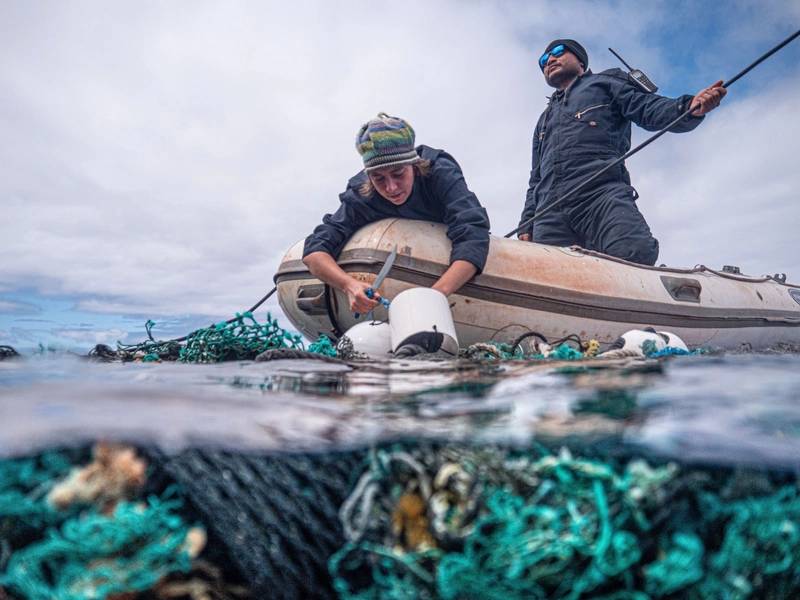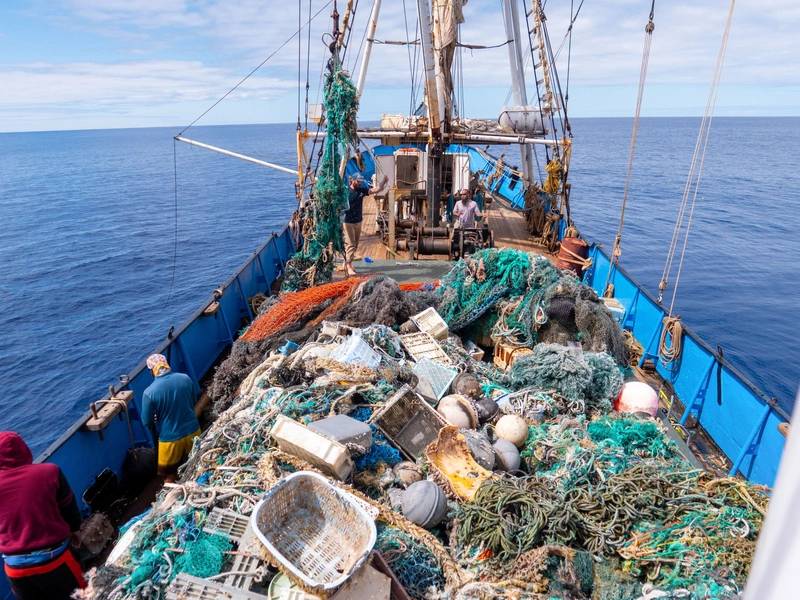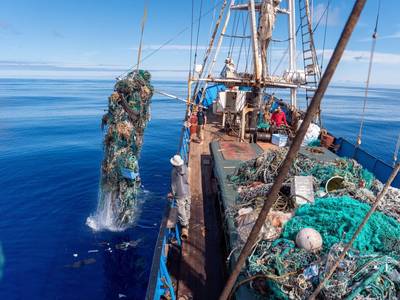OVI: 103 Tons of Garbage Removed From North Pacific Gyre
Ocean Voyages Institute’s marine plastic recovery vessel, S/V KWAI, docked at the port of Honolulu at the end of June after a 48-day expedition successfully removing 103 tons (206,000 lbs.) of fishing nets and consumer plastics from the North Pacific Subtropical Convergence Zone (more commonly known as the Great Pacific Garbage Patch or Gyre).
The Pacific Gyre, located halfway between Hawaii and California, is the largest area with the most plastic, of the five major open ocean plastic accumulation regions, or Gyres, in the world’s oceans.
This expedition sets a record for the largest at sea clean-up in the Gyre to date, and more than doubles Ocean Voyages Institute’s own results from last year.
“I am so proud of our hard-working crew,” said Mary Crowley, founder and executive director of Ocean Voyages Institute. “We exceeded our goal of capturing 100 tons of toxic consumer plastics and derelict ‘ghost’ nets, and in these challenging times, we are continuing to help restore the health of our ocean, which influences our own health and the health of the planet.”
Known as the “Ghost Net Buster,” Crowley is renowned for developing effective methods to remove significant amounts of plastics out of the ocean, including 48 tons (96,000 lbs.) of toxic plastics during two ocean clean-ups in 2019, one from the Gyre and one from the waters surrounding the Hawaiian Islands. “The oceans can’t wait for these nets and debris to break down into microplastics which impair the ocean’s ability to store carbon and toxify the fragile ocean food web,” Crowley said.
 S/V KWAI crew remove a GPS-enabled satellite tracker from a ghost net in the Gyre. © Ocean Voyages Institute
S/V KWAI crew remove a GPS-enabled satellite tracker from a ghost net in the Gyre. © Ocean Voyages Institute
During the expedition, the KWAI’s crew, led by Captain Brad Ives, collected marine plastic pollution with the help of GPS satellite trackers that Ocean Voyages Institute designed with engineer Andy Sybrandy of Pacific Gyre, Inc. The beacons are placed on nets by volunteer yachts and ships. Drones, as well as lookouts up the mast, enable the ship’s crew to home in on the debris. They then recover the litter, place it in industrial bags, and store it in the ship’s cargo hold for proper recycling and repurposing at the end of the voyage.
“We are utilizing proven nautical equipment to effectively clean-up the oceans while innovating with new technologies,” Crowley said. “Ocean Voyages Institute has been a leader in researching and accomplishing ocean clean-up for over a decade, granted with less fanfare and attention than others, but with passion and commitment and making meaningful impacts.”
Ocean Voyages Institute will be unloading the record-breaking haul of ocean plastic debris while docked alongside Pier 29 thanks to the support of Matson, a Honolulu-based transportation company, in preparation for upcycling and proper disposal.
“In keeping with our commitment to environmental stewardship, Matson has been searching for a way to get involved in cleaning up the Pacific Gyre,” said Matt Cox, chairman and CEO. “We’ve been impressed with the groundbreaking efforts of Ocean Voyages Institute and the progress they’ve made with such a small organization, and we hope our support will help them continue this important work.”
Future similar expeditions aim to expand to other parts of the world in need of efficient clean-up technologies.
 Recovered nets and consumer plastic on the deck of S/V KWAI. © Ocean Voyages Institute
Recovered nets and consumer plastic on the deck of S/V KWAI. © Ocean Voyages Institute
















